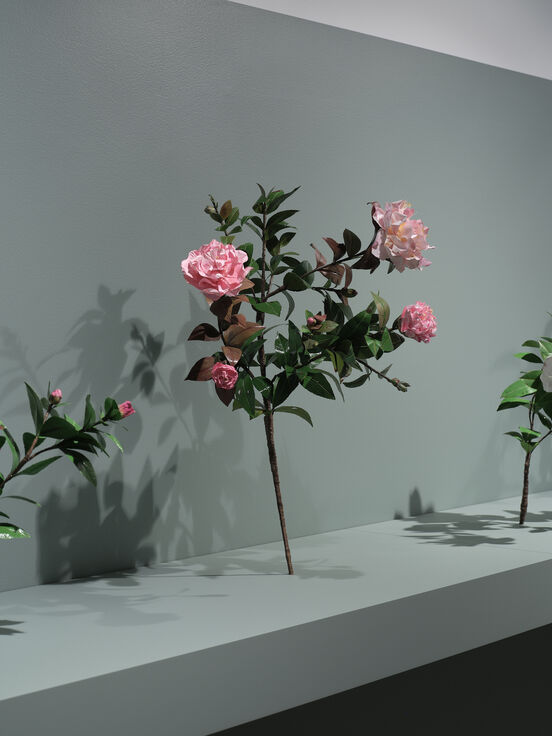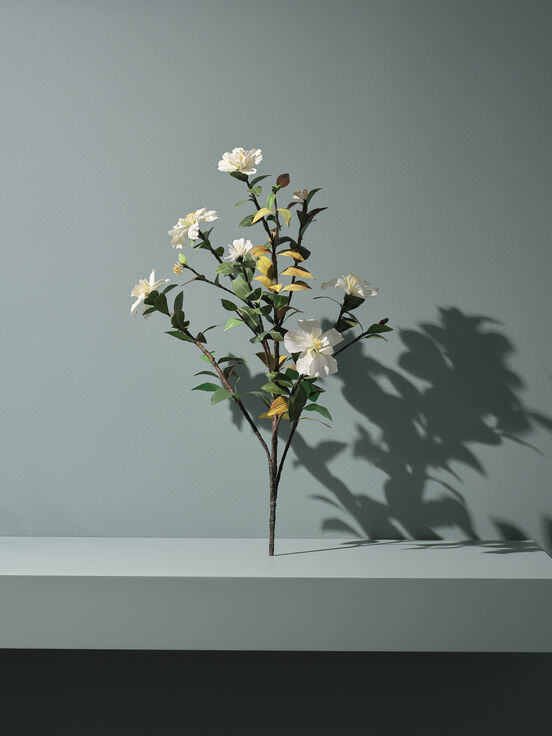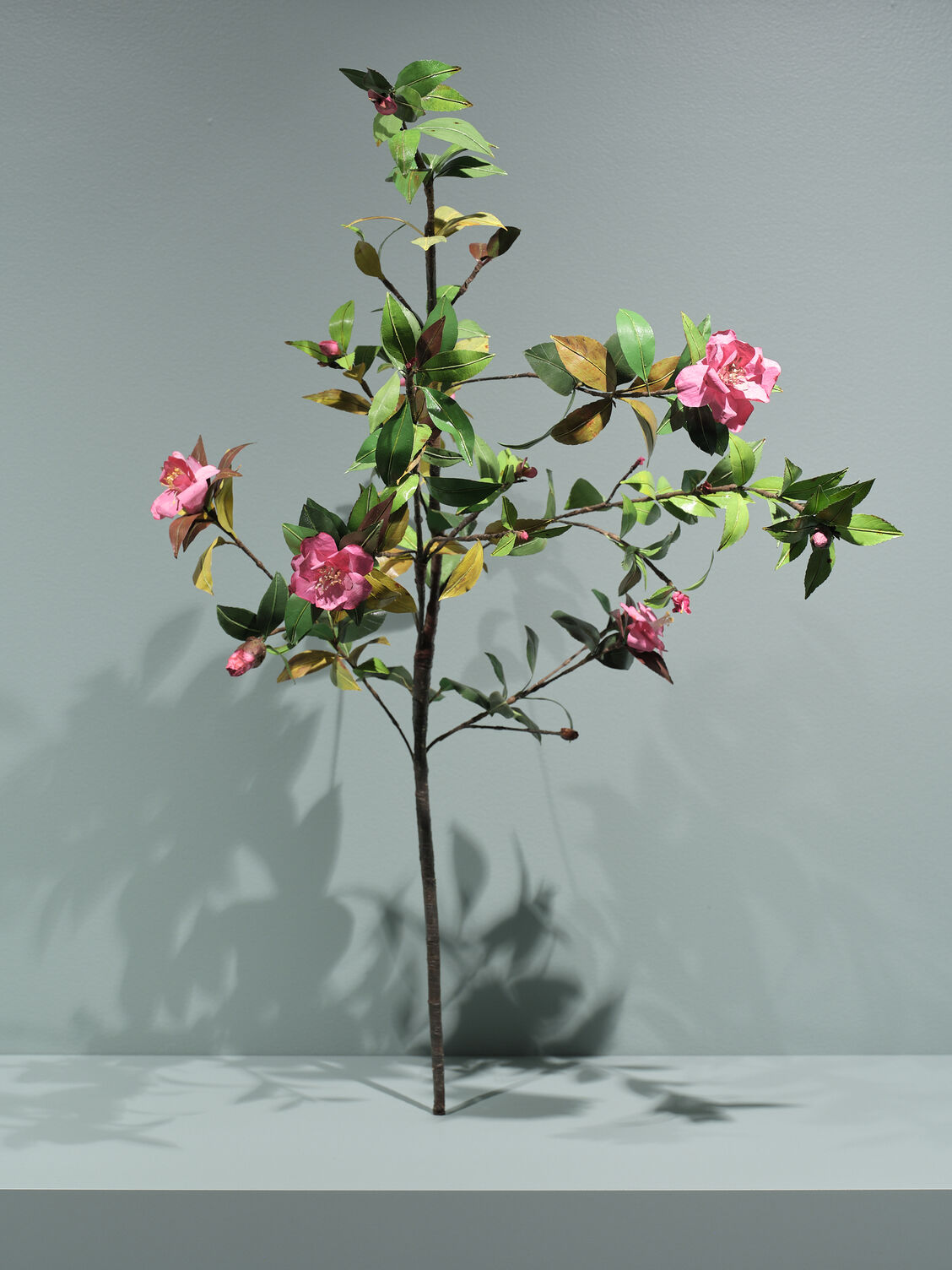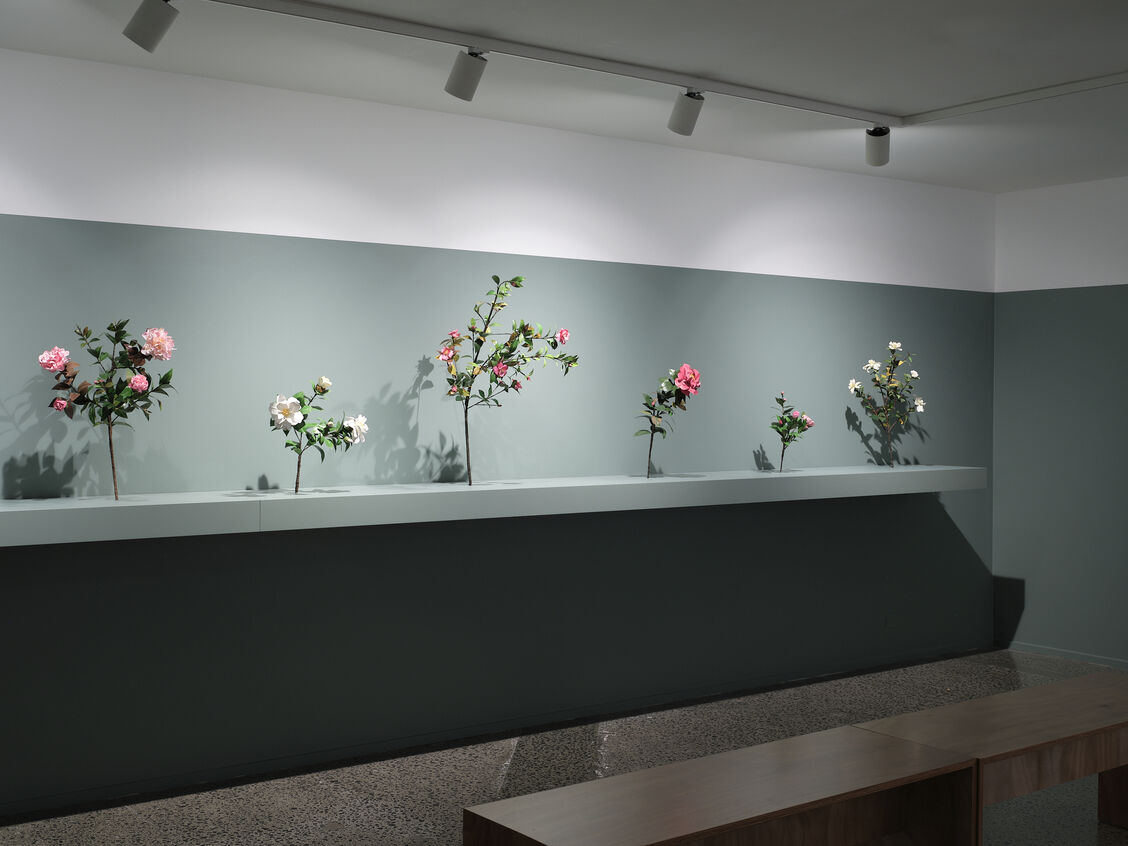In The Camellia Society Karin Montgomery presents ten exquisitely detailed replica paper camellias: eight stems of the most common variety, Camellia japonica, and two stems of the Camellia oleifera.
Montgomery’s first experiments into making paper flowers – using only the materials at hand among her grandson’s art supplies during the 2020 lockdown – have developed over several years into works of increasing complexity and refinement. She now fabricates them from fine papers imported from Italy and Japan, enjoying the discordance that arises from the use of opulent materials to make common flowers.
Botanical accuracy is used strategically by Montgomery to draw people towards her paper flowers. Her extraordinary detail extends down to slight blemishes or discolouration on a petal or leaf, the uniquely serrated edges and finely scored veins of individual leaves of her paper flowers, the replications of every curve or kink of a stem. She is drawn particularly to the beauty of bedraggled specimens, in which blooming health is in the process of turning to decay.
The Camellia Society is not about pretty flowers. The exhibition, and Montgomery’s art more broadly, is charged with the histories of both the camellia plant and the human elements associated with its propagation.
Historians and botanists do not know when the first Camellia arrived in Aotearoa New Zealand, whether it travelled direct from China, or via cultivations in the United Kingdom or Europe, or who first carried it here, but environmental historian James Beattie has identified more than fifty varieties of Camellia, among other introduced Chinese ornamental plants, populating the gardens of prosperous settlers in New Zealand from the early 1840s. These planting stories underlie The Camellia Society.
The attention Montgomery draws to her intricate paper flowers in this exhibition highlights also a wry botanical irony: that Camellias, once so prized, are now so commonplace that people scarcely notice them.
—
Karin Montgomery’s exceptional paper craft reflects her attentiveness to the ecology of her garden and immediate inner-city neighbourhood. While her work has its origins in a time of pandemic lockdown and general biophilia, the foundations of her art are in decades of aesthetic experience. For many years she worked as a textile importer, kept bees in her garden and developed an appreciation of botanical art –seventeenth-century Dutch flower painting, Mary Delany’s eighteenth-century ‘paper mosaicks’ and Fanny Osborne’s late nineteenth-century studies of native flora on Aotea Great Barrier Island. Montgomery is interested in the history of plant migration and has researched whaler gardens in Aotearoa and the Chinese origins of ubiquitous local species. She is represented by Anna Miles Gallery.

Karin Montgomery, The Camellia Society, 2025, photographs by Sam Hartnett


